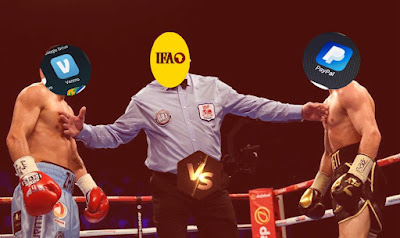Venmo vs PayPal: A Comprehensive Comparison of Features and Benefits.
VENMOand PAYPALare both popular mobile payment services that allow users to send and receive money online.
While they are both owned by the same parent company, there are some differences between the two services.
Let's have a comprehensive look at some of them.
Availability and Accessibility
PayPal is available in more than 200 countries and supports over 100 currencies, making it a widely accepted payment service.
Venmo, on the other hand, is only available in the United States and supports only USD transactions.PayPal is also more accessible as it can be used on desktop computers as well as mobile devices, while Venmo can only be used on mobile devices through the Venmo app.
Security
Both Venmo and PayPal offer high levels of security to protect users' personal and financial information.
However, PayPal has been around for longer and has a more established reputation, which may give users greater confidence in its security measures.Ease of Use
Venmo and PayPal are both easy to use, with intuitive mobile apps and straightforward payment processes.
However, Venmo has a more social aspect to it, allowing users to add notes and emojis to their transactions, which can make the payment experience more fun and engaging.Transaction Limits
Venmo has a limit of $4,999.99 for transactions, while PayPal's limit is much higher at $60,000.
This means that if you need to send or receive larger amounts of money, PayPal might be a better option for you.
Integration with Other Services
PayPal is widely integrated with various e-commerce platforms and online marketplaces, making it easy for users to make purchases and receive payments.
Venmo, on the other hand, has limited integration with other services and is mainly used for person-to-person transactions.Fees
Both Venmo and PayPal offer free transactions when you link your bank account, but they charge fees for certain types of transactions.
Here are some of the fees that each service charges:
Venmo Fees
- Free to send and receive money when using a linked bank account, debit card, or Venmo balance.
- 3% fee for transactions funded by credit card.
- 1% fee for instant transfers to your bank account (minimum fee of $0.25 and maximum fee of $10).
- $0.25 fee for standard transfers to your bank account, which take 1-3 business days to process.
- $2.50 fee for ATM withdrawals using the Venmo debit card ($0 fee for MoneyPass ATM withdrawals).
- 1% fee for transactions that involve a currency conversion (e.g., sending money to someone in a different country).
- $40 fee for each returned transaction (e.g., when a payment is sent to a closed account, or a recipient is unable to accept the payment).
- $5 fee for requesting a physical check to be mailed to you for a balance in your Venmo account.
- $2.99 fee for expedited delivery of the Venmo debit card.
PayPal Fees
- Domestic Payments free for payments funded by a PayPal balance or bank account. 2.9% + $0.30 fee for payments funded by a credit or debit card
- 5% fee for payments sent to another country and currency conversion is required. Additional 2.5% currency conversion fee for any currency conversion
- 0.5% to 2% transaction fee for payments received from another country
- 1% to 3.5% currency conversion fee for any currency conversion
- 5% + $0.05 fee for transactions under $10 USD
- 2% fee for mass payments to multiple recipients. Maximum fee of $1 USD per payment
- Virtual Terminal:2.7% per swipe, dip or tap for card present transactions.
- 3.5% + $0.15 per transaction for manually entered transactions
- PayPal Here:2.7% per swipe, dip, or tap for card present transactions.
- 3.5% + $0.15 per transaction for manually entered transactions.
Security
Both Venmo and PayPal have strong security measures in place to protect user accounts and transactions.
Venmo uses encryption and multi-factor authentication to secure user accounts, while PayPal uses advanced fraud protection tools and 24/7 monitoring.
Overall, Venmo is a great option for sending and receiving smaller amounts of money between friends and family, while PayPal is better suited for larger transactions and online purchases.
However, it's important to note that both services charge fees for certain types of transactions, so be sure to read the fine print before using either service.












